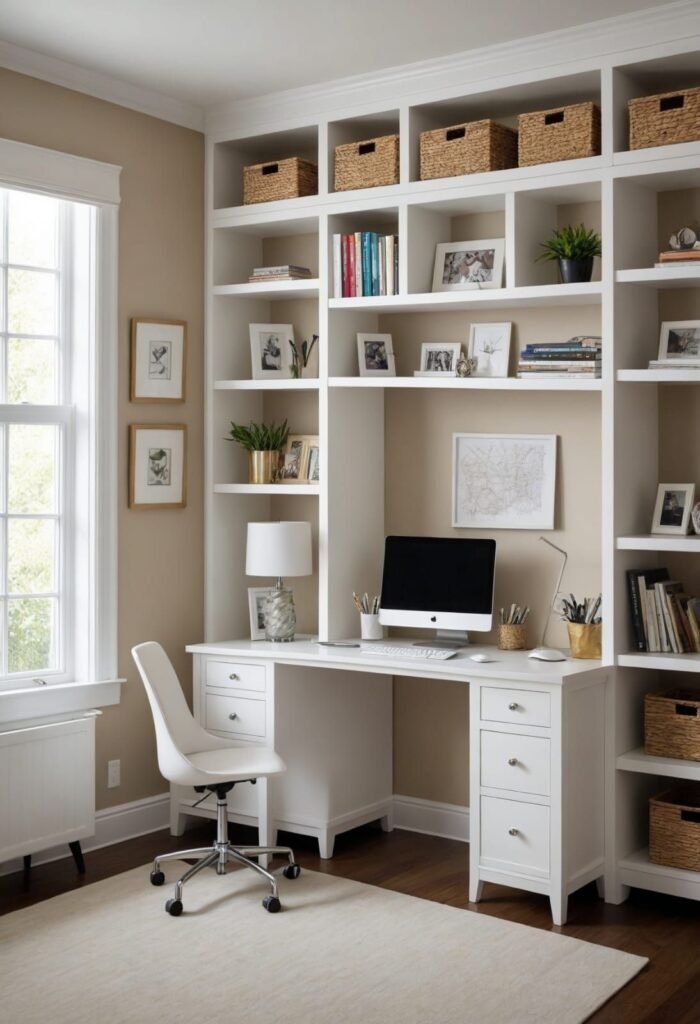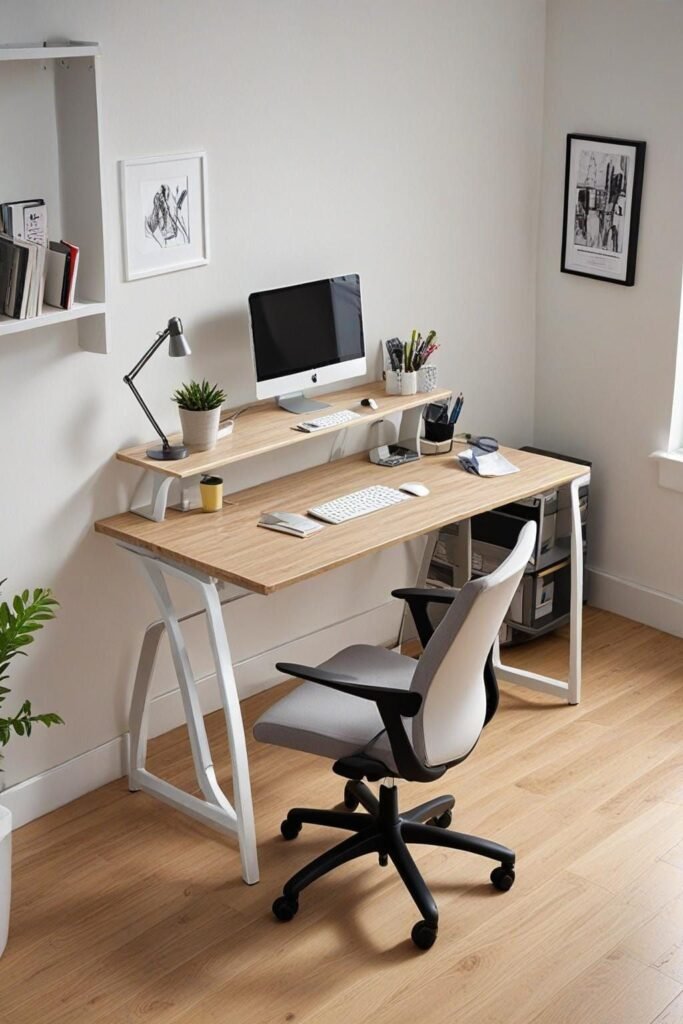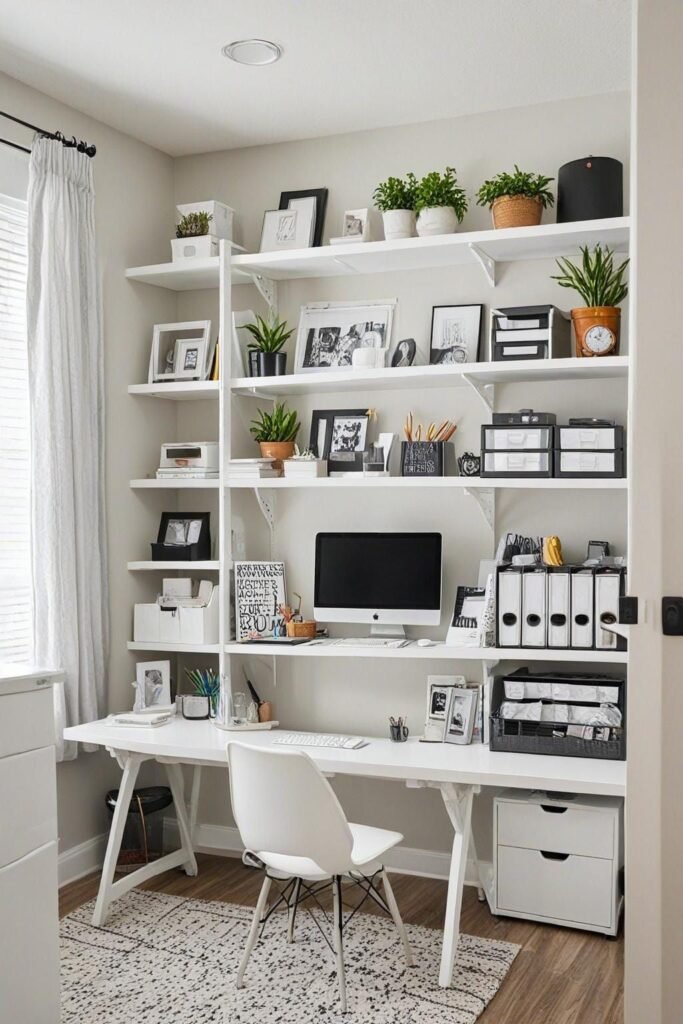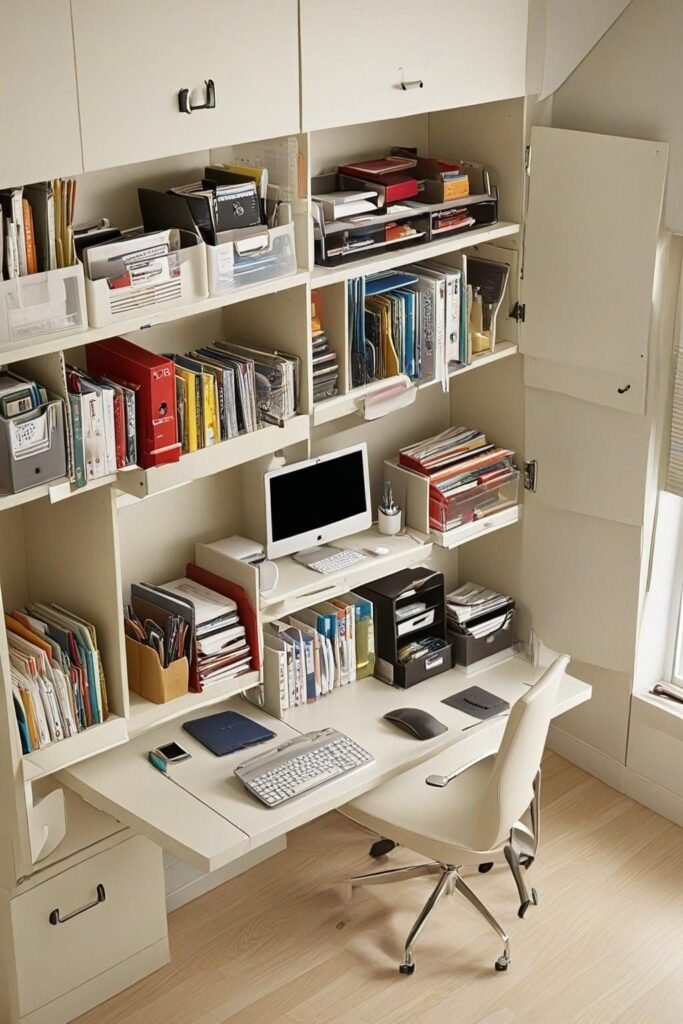How to Organize your home office in 7 effective points
Nowadays, working from home has become an integral part of the lives of many. With this transformation, the importance of organizing the home office effectively to ensure productivity and comfort has emerged. A well-organized office not only helps increase efficiency, but also creates a stimulating and comfortable work environment. In this article, we’ll explore seven key points for organizing your home office in a way that enhances productivity and improves the quality of work.
1. Choose the appropriate location
Choosing the right location for your home office is the first and most important step in the organizing process. We recommend finding a quiet place away from noisy areas in the house. Ideally, this place should be near a window to provide natural lighting and good ventilation. If you have an extra room, great! But if not, don’t worry. A corner of a bedroom or living room can be transformed into an efficient work space. Make sure the location you choose provides you with enough space to comfortably place your desk and chair, while leaving room to move freely.

After selecting the location, comes the role of choosing the appropriate furniture. Desk and chair are the key elements here. We recommend choosing a desk that fits the size of the available space and provides an adequate work surface. Think about your needs: Do you need space for a computer and a monitor? Do you need space for handwriting? Choose an office that meets these needs.
As for the chair, don’t skimp on yourself. Invest in a comfortable, adjustable office chair. The chair should provide good support for your back and allow you to sit in a correct posture for long hours. Remember, your physical comfort greatly impacts your productivity and health in the long run.

Now that you have the basic space and furniture, it’s time to organize your tools and supplies. We suggest starting by identifying the tools you use frequently. These tools should always be on hand. You can use desk organizers or drawers to store pens, papers, staples, and other small supplies.
Don’t forget to organize cables and wires. Use cable ties or cable management boxes to keep cords tidy and out of sight. This not only improves the overall appearance of your office, but also reduces the risk of tripping or damaging equipment.

Efficient storage is key to keeping an organized desk. We recommend using a mix of open and closed storage units. Open shelves are ideal for books and files that need quick access, while closed cabinets are useful for storing items you don’t need on a daily basis.
Consider using a hanging file system to organize important documents. Categorize your files by project, date, or importance. This will help you find what you need quickly when needed.
Don’t forget about vertical space! Use the walls to hang chart boards or extra shelves. This saves space on your desktop and keeps important things at eye level.

Good lighting is essential for an effective home office. We recommend relying on a combination of natural and artificial lighting. If your desk is near a window, make use of daylight as much as possible. But make sure there are curtains or shades to control the amount of light and avoid glare on the computer screen.
For artificial lighting, invest in a good desk lamp that provides directional lighting to your work area. It’s best to choose an adjustable lamp so you can direct the light where you need it. In addition, consider general room lighting to avoid strong contrast between the work area and the rest of the room.

Your home office is an extension of your personality, so feel free to add personal touches. We encourage adding items that make you feel good and inspired. These could be family photos, artwork you love, or houseplants to add a touch of nature to your work space.
However, it is important to maintain balance. Avoid excessive decor that may distract. The goal is to create a stimulating and comfortable environment without sacrificing function and organization.

Finally, remember that office organization is not a one-time event, but an ongoing process. We recommend reviewing your office organization regularly, perhaps once every month or two. During these reviews, think about what is working well and what needs improvement.
Feel free to try new arrangements or add new organizational elements if you feel it will improve your productivity. Be flexible and willing to modify your workspace as your needs change.

In conclusion, organizing your home office is an investment in your productivity and comfort. By following these seven points, you can create an effective and motivating workspace that helps you make the most of your time and effort. Remember, the perfect office is one that meets your specific needs and reflects your unique work style. So, don’t be afraid to experiment and tweak until you find the perfect arrangement for you.